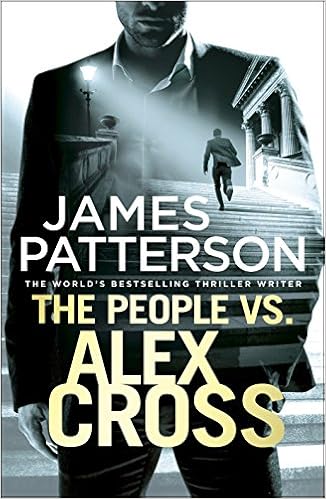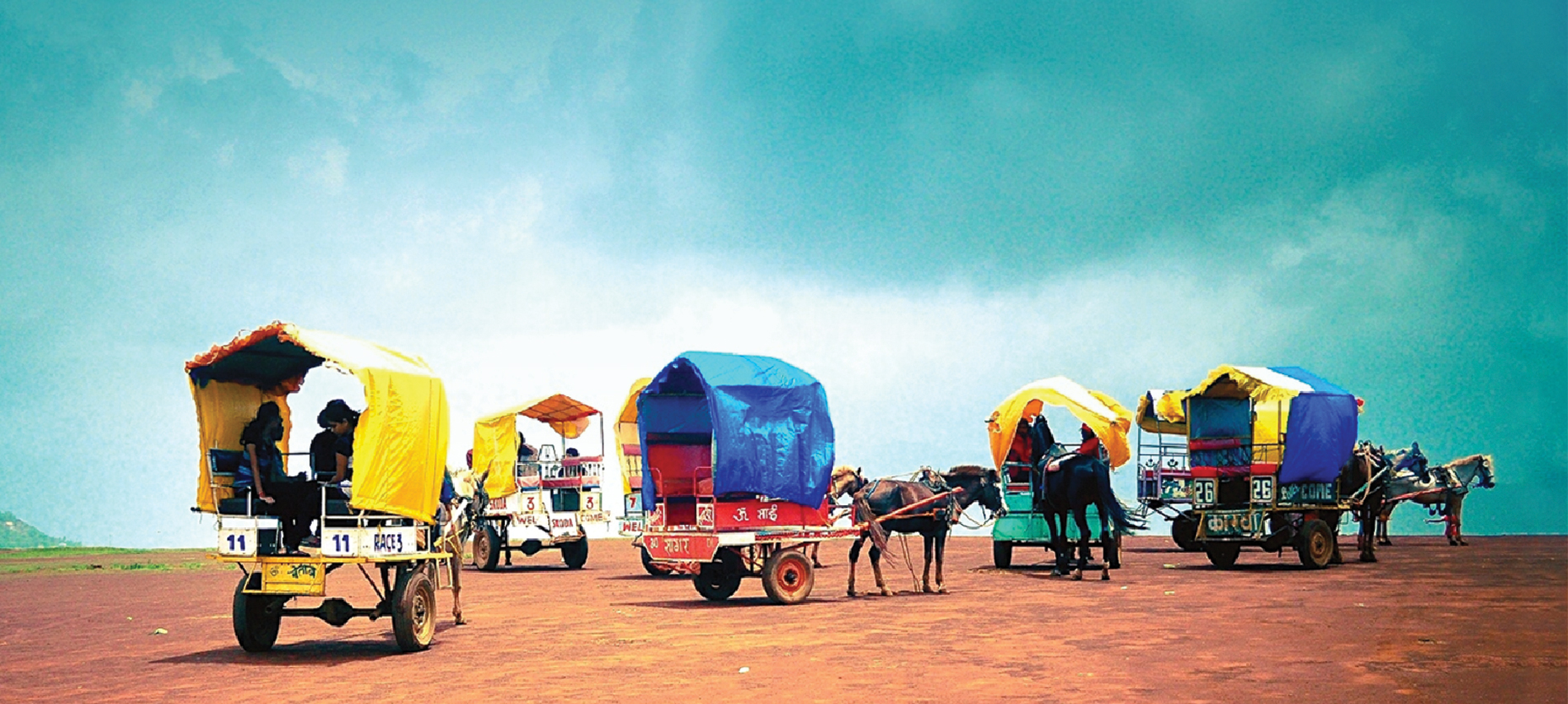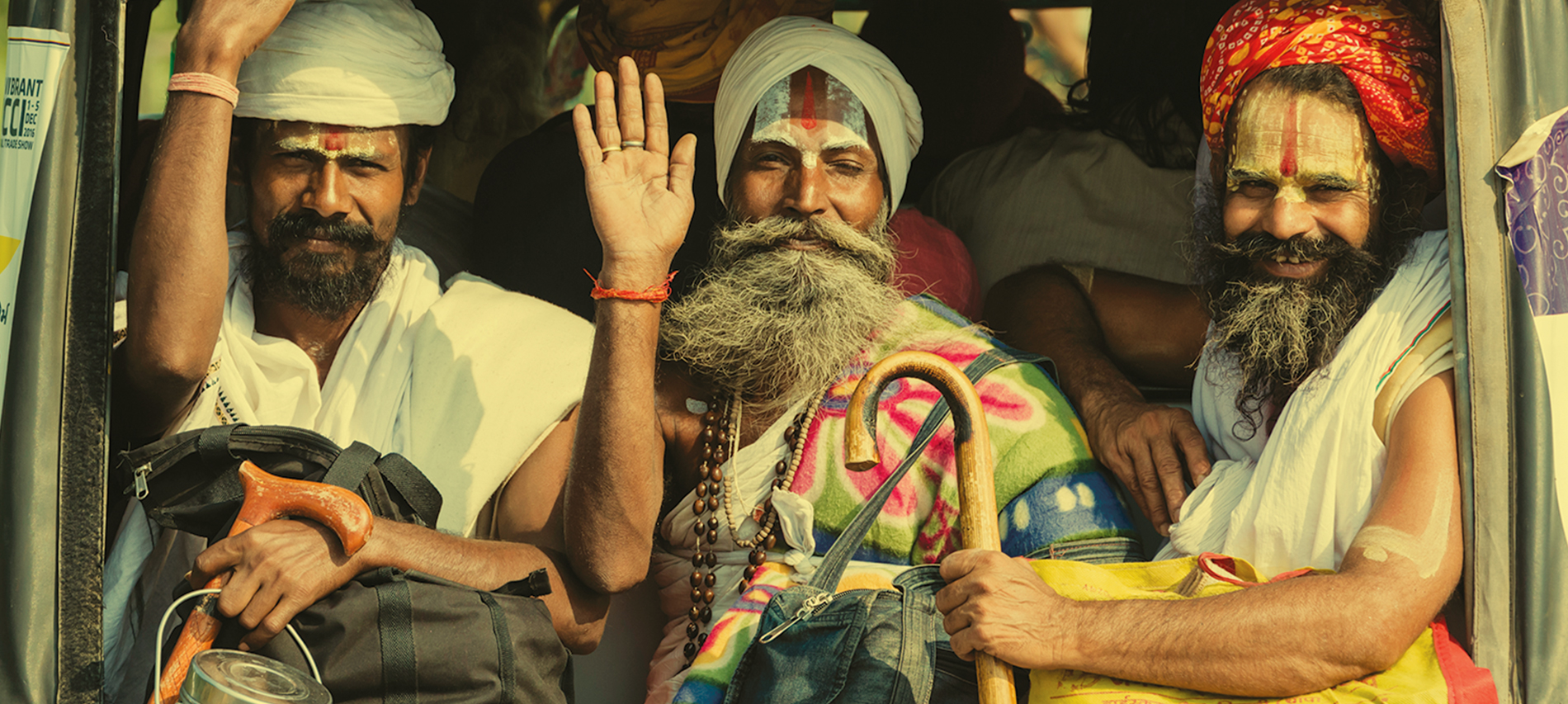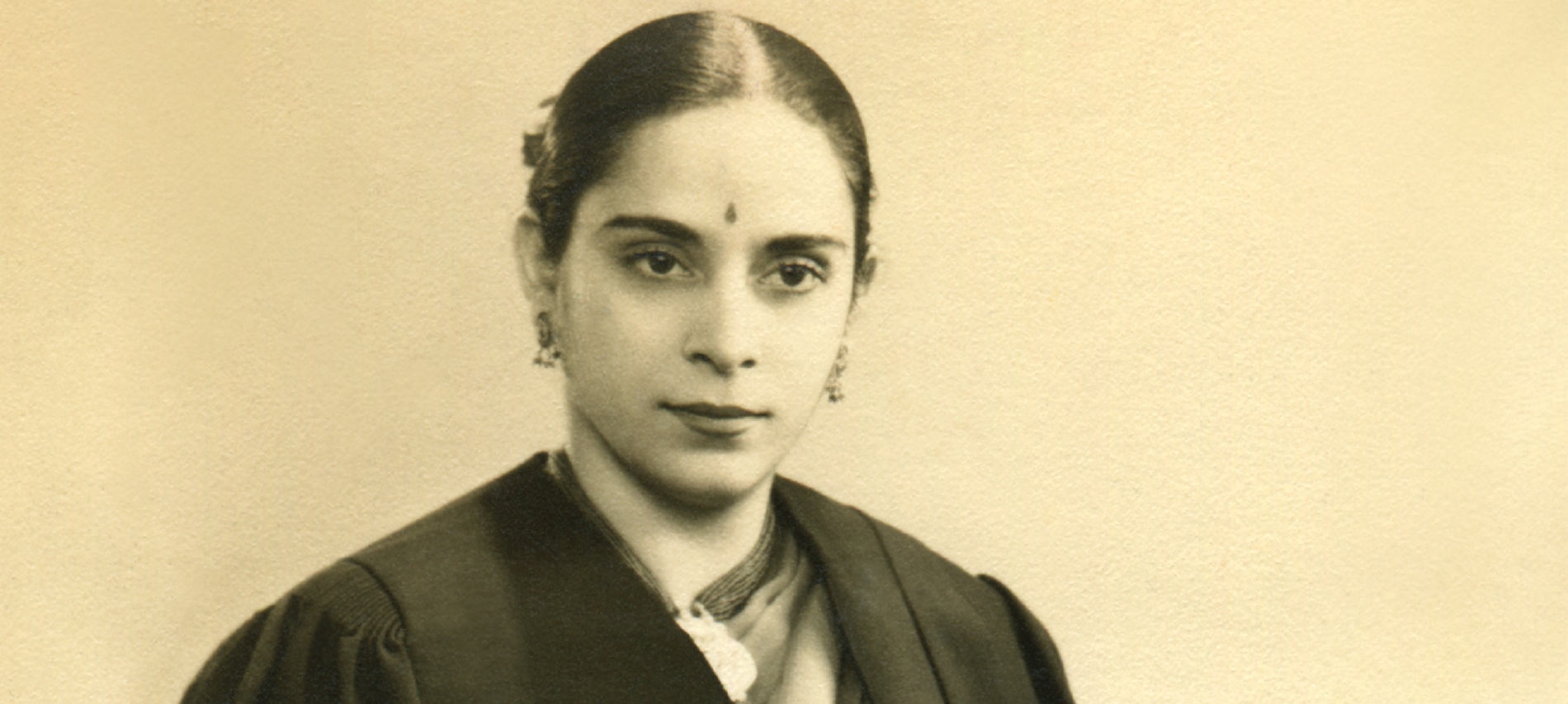Mark Tully worked for the BBC in South Asia for 25 years and now works as a journalist in New Delhi. His books include No Full Stops In India, The Heart of India and Lives of Jesus. In India in Slow Motion, Mark Tully covers subjects as diverse as Hindu extremism, bonded child labour, Sufi mysticism, the crisis in agriculture, the persistence of political corruption and the problem of Kashmir.
Let’s read an excerpt from this book.
———
On the last Sunday we met another priest who had not found change easy. When we were sitting in a pew waiting for mass to start in Old Goa’s Se Cathedral, a small, elderly but remarkably spry priest came up to us wearing not the usual white cassock but an old fashioned, tight-fitting black one with a traditional high dog-collar. He asked whether I was a Portuguese speaker and when I told him I didn’t know a word of the language he said, ‘I usually ask foreigners that because I love speaking Portuguese but I don’t get much chance nowadays.’
I asked why the exterior of his cathedral was now yellow instead of the traditional Goan white and this provoked a diatribe against the Archaeological Survey of India which had taken over responsibility from the church for the monuments of Old Goa. ‘We can’t do anything to our own cathedral now,’ he fumed, hopping from one foot to the other in his anger. ‘We even have to get permission to put up a new collection box, and what do they do to preserve the church? Nothing.’ As evidence he took me to the west end and showed me piles of rubble where the plaster was peeling from the pillars.
I had noticed that his cassock had purple piping and purple buttons so I asked, ‘Does the purple mean you are a monsignor?’
‘No. But I am Father Adolpho Joviano Castro Viegas, a canon of the cathedral and the parish priest and that is just as senior.’
Having been put straight about that, I went on to ask, ‘In the cathedral, do you keep up the old traditions of worship?’
‘Of course I try to, but what can we do? We don’t have money to pay for the choirs and all that you need for proper ritual, and the bishop doesn’t care either. The Portuguese bishop used to come here regularly with full pomp and devotion. The present one only comes about four times a year. I love the full ritual and singing, it lifts your heart.’
The peppery priest then left me to robe for the chapter mass. The vast cathedral was far from full when Father Adolpho and six other equally elderly canons entered through the south aisle. Robed in splendid green copes they walked in a solemn procession, accompanied by just one server, to the altar at the top of the chancel steps. Six of the canons including Adolpho took their seats in high backed chairs behind the altar and one stood at the altar to celebrate the mass with dignity and solemnity. He was accompanied by a small choir in the organ loft.
Looking at the magnificent gilded reredos crowned by the figure of Christ on the cross just below the white-barrelled ceiling of the sanctuary, I couldn’t help but think of the Portuguese who had built this monument to impress Goans with the majesty of a God who lived on high. I knew that the church had to change, to bring God down to earth, if it was to survive in independent India, but I also acknowledged that I came from the old tradition, the tradition Father Adolpho was preserving. I found it easier to worship God in majesty, rather than God the social worker who battles for the poor, or God the personal pal of the charismatics.
——

Tag: Penguin Random House
Six things you didn’t know about author Sara Naveed
Packed with romance, drama and tragedy, Sara Naveed’s most recent book, Undying Affinity is the story of a twenty-two year old girl who falls in love with the new finance professor in her university. Her previous book is titled Our Story Ends Here. She has finished writing her third book and is currently working on a fourth.
The author, who spent most of her adolescent years in Sharjah, UAE moved back to Pakistan where she now lives with her parents and two siblings. Here are some facts you didn’t know about the author:






——–

In the Name of God by Ravi Subramanian – An Excerpt
Ravi Subramanian, an alumnus of IIM Bangalore, has spent two decades working his way up the ladder of power in the amazingly exciting and adrenaline-pumping world of global banks in India. Four of Ravi’s eight bestselling titles have been award winners. His latest thriller, In the Name of God, revolves around the Anantha Padmanabha Swamy Temple in Thiruvananthapuram that safeguards within its sacrosanct walls centuries of customs and rituals, unimaginable wealth and an unwavering calm. Until a dead body turns up in its holy pond. . . and then another.
Let’s read an excerpt from this gripping novel.
.
—————-
Nirav Choksi, a name the who’s who of Mumbai had on their speed dial, designed and manufactured customized jewellery for the rich and famous all over the world. He was often referred to as the Indian Joel Arthur Rosenthal, one of the world’s most exclusive jewellers whose high-flying clientele included Elizabeth Taylor, Elle Macpherson, Kim Kardashian, Michelle Obama and even the Princess of Jordan. Nirav Choksi’s client list boasted the marquee names on the social circuit—politicians, wealthy Indian businessmen, film stars. Choksi wielded a fair bit of clout on the jewellery trade in the country. A man with both contacts and influence, he was an extremely sought-after guy in the political circuit for skills which went beyond jewellery design.
Like Rosenthal, he too made fifty to sixty pieces of jewellery a year. Connoisseurs recognized an NC piece the moment they saw it. From traditional to contemporary, he designed them all, never repeating a design. A man with a huge ego, Nirav crafted his own designs and would get very upset if a client tried to dictate to him. He was once overheard saying that he preferred international clients to Indians, not because they paid more, but because in India every woman thought she was the best designer in the world. There were times when he had refused to sell a piece of jewellery because he felt the ornament would not look good on the client—such was his pride in his craft. Every stone is a canvas and every item of jewellery is a piece of art, he would say. Advertisements and self-promotion were not Nirav’s style. According to him, ‘word of mouth’ was what helped him get and retain clients. Even his office in Zaveri Bazaar was a thousand square-foot pigeonhole in the basement of Pancharathna Complex.
Zaveri Bazaar was the nerve centre of the jewellery trade not only in Mumbai, but the whole of India. Roughly sixty per cent of India’s gold trade passed through the narrow overcrowded lanes of the bazaar. The shabby buildings lining the sides of the main road held crores of rupees worth of gold, diamonds and jewellery, all stored in lockers built into the walls of the small stores, said to be strong enough to withstand any kind of robbery attempt, earthquake or bomb blast. The Government of India’s attempts to move the diamond and jewellery trade to a snazzy new building in Bandra Kurla Complex, an upmarket suburb in Mumbai, had been met with resistance. Many jewellers, led by Nirav Choksi, were Zaveri Bazaar loyalists and unwilling to move to the government-sponsored yet privately owned BKC Diamond Bourse.
Nirav had one more office in the neighbourhood. Apart from the basement office in Pancharathna Complex, he also had a small workshop a few buildings away where his trusted and most skilled workers crafted the pieces that he so painstakingly designed.
That day, he had just stepped into his basement office when his phone rang.
————

If It’s Monday It Must Be Madurai by Srinath Perur – An Excerpt
Srinath Perur’s writings on travel, science and books have appeared in various national magazines. He lives in Banglore. As much about people as places, If It’s Monday It Must Be Madurai: A Conducted Tour of India is also a reflection on the nature of popular travel today marked by the packaging of experiences, the formation of tourist economies and compulsive picture-taking.
Let’s read an excerpt from this book.
—————–
This is my first time on a conducted tour: eight days in a Tamil Nadu Tourism bus, moving south from Chennai in short hops along the coast to Kanyakumari, and back via Madurai and Trichy. Our tour guide is the industrious Mr N, who will prove ever-willing to provide unscheduled stops at places of religious significance.
I am on assignment for Outlook Traveller magazine along with photographer Jyothy Karat. She and I are by far the youngest of the twenty-one tourists on board. The rest are between fifty and sixty-five years old, many just-retired with ‘settled’ children. The bulk of our group is Telugu speaking—a few couples plus eight or ten members from a single family. There is an immediate division along linguistic lines with all the Telugu speakers forming a solid group. The outliers are Jyothy and I, a Bengali couple and an NRI woman who looks remarkably like Johnny Lever.
The men on the tour have worked in banks and public sector undertakings, one has been a headmaster. The women are mostly housewives. All this is revealed in a ‘self-introduction’ session organized by Mr N after we leave Chennai. We take turns to lurch up to the mike at the front of the coach to state—Mr N is always exact in his directions—‘name, place, what you are doing, and designation’. The men, to a man, speak for their wives. The Bengali gent delineates his identity in three crisp sentences: ‘I am from Calcutta. I am a Bengali. I am a retired government servant.’ Ms Lever says, ‘I’ve left my husband and come to tour India.’ The other women burst into applause, as eloquent a self-introduction as any. They also proceed to ignore Ms Lever for the rest of the tour.
Mr N has been a tour guide for close to twenty years, and he knows his flock eerily well. He’s brought along a stool that acts as a much-needed additional step while boarding the bus. He declares ad hoc restroom breaks that always have grateful takers. If he announces a medical shop, there are always people who’ve run out of their pills. It had struck me as odd that he specifically asked us to mention designation while introducing ourselves, but a day into the tour I’m beginning to see how much it matters. The headmaster is not simply a teacher, the Regional Manager did not just work in a bank. The official persona still lingers about the men, and travel takes the aspect of an inspection tour. ‘How was the food?’ one man asks me after lunch. I tell him I enjoyed it; what did he think of it? He grimaces and shakes his head: ‘Not up to the mark.’ Every aspect of the tour is up for comparison and assessment over the next week: food, the coach, rooms, the driving, sunsets, temples, even the gods.
In the bus I sit at a window seat near the back. The Regional Manager takes the aisle seat in front of me, reclines his backrest, and asks through the gap, ‘What do you write about?’ I tell him. ‘Economics is more interesting,’ he says, and embarks on an epic monologue. I learn, among other things, that the national savings rate is down from 23 per cent to 21 per cent and that the high point of RM’s professional life involved seeing the Allahabad GM pulled up for dozing off in a training session. I make strategic seating choices for the rest of the trip, but am cornered in various other places. One morning after breakfast RM comes up to me and points at Jyothy, who is taking pictures in the distance. ‘I have thought of a poetic name for your friend,’ he says. ‘She is Lens Lass.’
Lens Lass is less than half the age of the next youngest person on the tour (myself excepted), and realizes right on Day 1 that this tour may not have much to offer by way of fun. On the first evening of the tour we go boating in the mangroves of Pitchavaram, down the coast from Pondy. Seven of us in one rowboat, the ride is proving sedate, even somnolent, when the headmaster cries out to the boatman, ‘Slow! Slow!’ LL confesses she is feeling trapped. It doesn’t help that Ms Lever is developing a motherly crush on her, and even attempts to create a rift between us. LL is advised to be wary of me: ‘He appears to be a good person, but in this world you never know.’
————-

5 Things You Didn’t Know About James Patterson
James Patterson is one of the widely renowned name in the field of literature. From adults to children, Patterson writes for all. He is best known for his thriller novels, especially his Alex Cross series. He is the first author to feature simultaneously on the New York Times children and adults bestseller list.
Here are 5 things you didn’t know about the man behind the eminent novels:





The Black Economy in India by Arun Kumar – An Excerpt
Arun Kumar taught economics at the Centre for Economic Studies and Planning, Jawaharlal Nehru University, Delhi, till 2015. He has a master’s degree in physics from Delhi University and Princeton University, USA, and a doctorate in economics from JNU. A ground-breaking book, The Black Economy in India in India shows how demonetization is not the way to end the black economy, since what India needs is to empower citizens and make leaders accountable.
Here’s an excerpt from the Prologue.
—————
The black economy is once again in the news because of the announcement of demonetization of the large-denomination currency notes. It is not that this is the first step that the present government has taken to tackle the black economy. It started its journey by forming a special investigation team (SIT) under a Supreme Court order in 2014. It has got the approval for many bills, for example, on Benami Property, Black Money held abroad and Income Declaration Scheme. But none of them had the same dramatic impact on the economy since they were not comparable in order of magnitude that demonetization is.
The present move will not be able to tackle the black economy but has the potential to devastate the economy. The impact on the poor, the farmers, workers and producers in the unorganized sectors has already been severe. Thus, it is impacting those who never generated black incomes or held much of the high denomination currency notes. According to reports, much of the high-denomination notes issued by the RBI are coming back into the banks. The implication is that those who held substantial black cash have managed to exchange their old notes for new ones. Thus, the culprits who were supposed to be punished by the demonetization have escaped while the innocent have been trapped into standing in queues or by unemployment.
The prime minister promised normalization in fifty days but that cannot happen since so much currency cannot be printed in such a short time. Not only will the currency shortage continue due to insufficient printing capacity but those with black money are first replenishing their coffers causing a shortage of cash available to the public. Further, hoarding is going on. Thus, the economy would suffer for much longer and irreversibilities have already set in, pushing the economy towards a recession.
All this happening in the context of the black economy has again brought this topic to the centre stage. Public curiosity/ awareness of the issue has suddenly increased by leaps and bounds. It is in this context that this book with a new prologue is being issued at this juncture. The prologue discusses the different remedies to tackle the black economy that have been attempted by the present government. It must also be said that the theoretical framework of the book remains as valid today as it did in 1999. In fact, there is a section on demonetization in the book which had argued against taking such a step for precisely the reasons that are playing out today.
—————

10 instances that define the evolution of Indian Cinema since 1947
India Since 1947: The Independent Years, takes us through the events, personalities and changes that have shaped the country in the seventy years since independence. Arranged chronologically, India since 1947 covers a wide range of topics, from agriculture, archaeology and the arts to science and technology, sports and wars, and everything else in between.
Let us read 10 interesting facts about the Indian Cinema since 1947.
——————————
1. 1949

2. 1959

3. 1969

4. 1971

5. 1986

6. 1988

7. 1995

8. 2000

9. 2003

10. 2004

—–

5 James Patterson books that are a must-read
James Patterson is a legend when it comes to thriller novels. He has created not only some memorable characters like Alex Cross and Michael Bennet, but also has some exciting series like the Middle School series, Women’s Murder Club in his kitty.
A writer for all age groups, here are five books you should read by the author.
The People vs Alex Cross

In this engaging thriller, Alex Cross finds himself on the wrong side of law. Charged with the murder of his nemesis, Cross is being portrayed as one of the trigger-happy cops who think they’re above the law. Cross knows his crime was an act of self-defense but will the jury see his view? This trial will keep you hooked till the last page.
Along Came A Spider
![Along Came a Spider: (Alex Cross 1) by [Patterson, James]](https://images-eu.ssl-images-amazon.com/images/I/51gVeKl1i%2BL._SY346_.jpg)
Two children have been kidnapped by their maths teacher, a man named Gary Soneji. Alex Cross is tasked with finding the kids but as he goes in deeper in the world of the kidnapper, he will find out that things are different than what it seems.
Hunted

Co-written with Andrew Holmes, this riveting thriller is about former SAS Agent David Shelley who goes looking for an old friend and finds him dead. Shelley can only find the truth behind his friend’s death if he puts himself in the same dangers as his friend. Will Shelley get to the truth? There’s only one way to find out.
Zoo
![Zoo (Zoo Series Book 1) by [Patterson, James]](https://images-eu.ssl-images-amazon.com/images/I/61fKB-HzqQL._SY346_.jpg)
What happens when the animals take over? Jackson Oz, a young biologist watches vicious animal attacks with an increasing sense of dread. As the attacks grow in ferocity, Oz with the help of ecologist Chloe Tousignant, races to warn world leaders before it’s too late. Will he able to stop it or will there be no place left for the humans to hide?
The Trial
![The Trial: BookShots (A Women’s Murder Club Thriller Book 1) by [Patterson, James]](https://images-eu.ssl-images-amazon.com/images/I/5187iABLqnL._SY346_.jpg)
Women’s Murder Club’s Detective Lindsay Boxer has finally managed to capture the drug cartel boss who has been tormenting her for months. He has threatened to unleash violence on everyone involved in the case, the whole city is paralysed and the Murder Club is caught in the eye of the storm. What happens next? Read and find out!
Intrigued yet? Tell us what you think of James Patterson’s works in the comments below.
5 Things You Didn’t Know About Lee Child’s Jack Reacher
Lee Child is widely known and admired for his thriller novels, especially his Jack Reacher novel series where his protagonist, an ex-military policeman travels the country with nothing but a toothbrush and has incredible encounters and unforgettable adventures. Reacher is back in a brand new white-knuckle read in Blue Moon.
Here are five things you should know about the memorable character:
Reacher was born in an army base in Germany.
~
As kids, Reacher and his brother Joe moved so much that spending a full school year in one place felt weird.
~
He performed 13 years of Army service, was demoted from Major to Captain in 1990.
~
Reacher has a scar on his arm where his brother struck him with a retaliatory chisel.
~
At age 36, Reacher roamed the United States taking odd jobs and investigating suspicious and frequently dangerous situations.
Get your share of suspense and thrills in Lee Child’s new book Blue Moon.
5 Times Leila Seth Struck A Perfect Balance Between the Home and the World
Leila Seth was the first woman judge of the Delhi High Court and the first woman to be a Chief Justice of a state in India. She was responsible for the report on Free and Compulsory Education of Children. In this autobiography, On Balance: An Autobiography, Leila talks about life’s joyous as well as its difficult moments.
Let’s look at 5 charming and often amusing vignettes from her life.
—————-





















